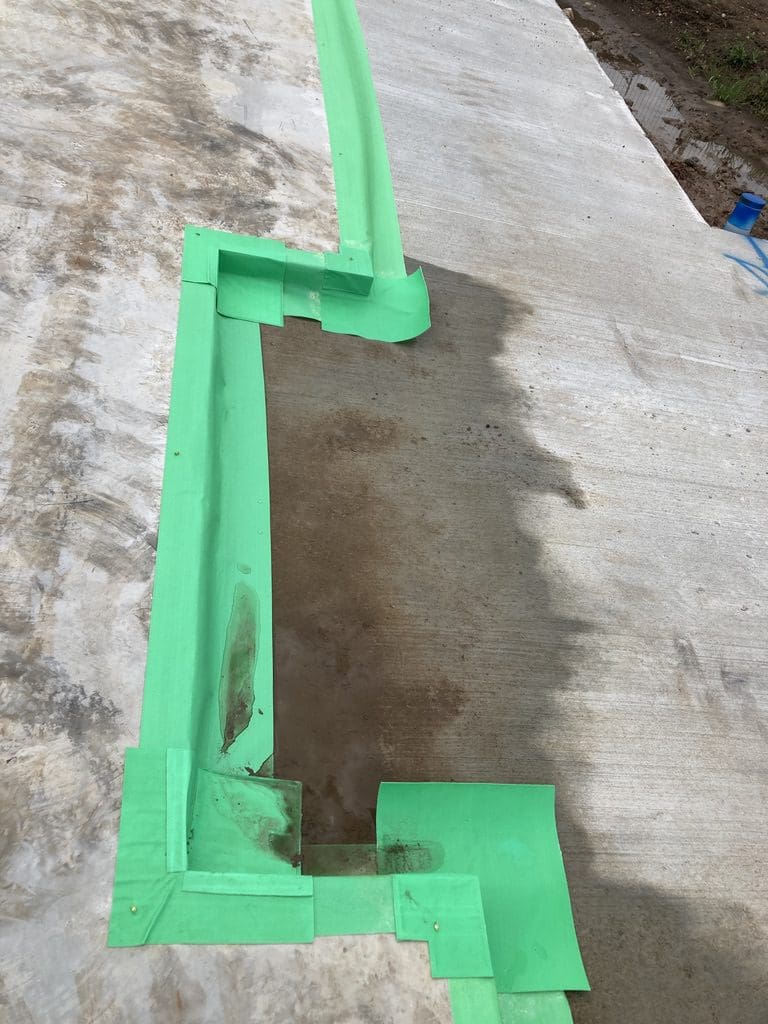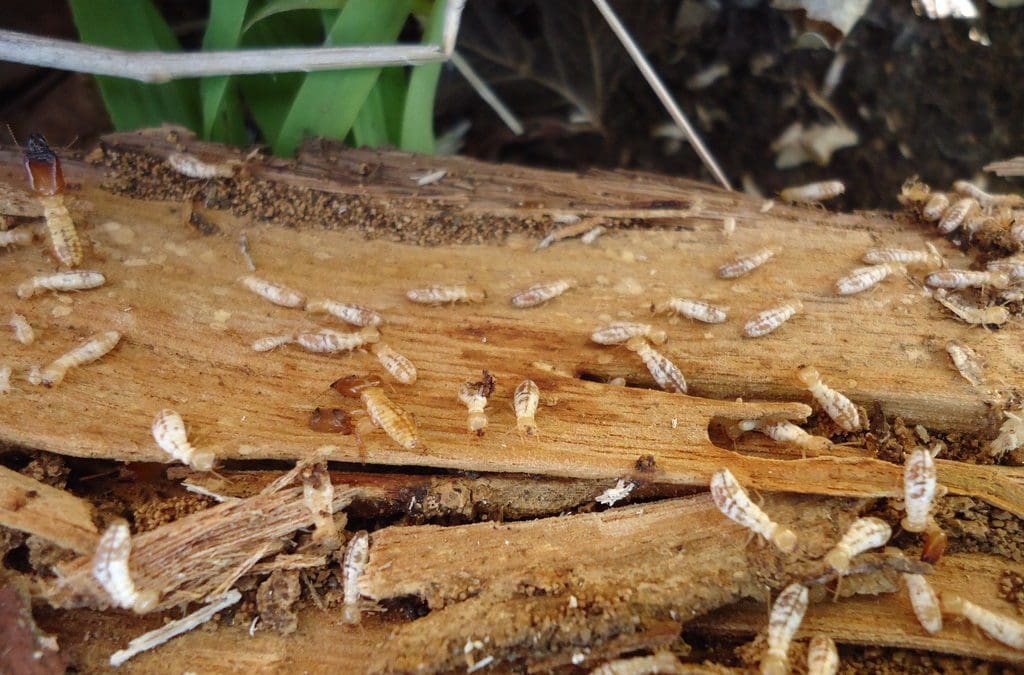The Definitive Guide to Termite Detection, Treatment and Prevention in Australia 2025
Why is it that we need a definitive guide to termite detection, treatment and prevention?
There have been many many blog posts and pieces of content created on the internet which claim to be able to help people in their search for the answers to their termites woes. This resource will allow you to educate yourself on the issue that you are facing and make an informed choice as to what action you will take. There are many various termite treatment methods and just as many pest controllers giving their opinion on what is best for you. As much as possible we will arm you so that you can independently make that choice. This guide was started in November 2021 and will continue to grow over time.
Lets start with some standards!
A good starting point will be to recognise that every home built in Australia after the late 1970’s will have been required, generally by council, to have had some termite protection carried out to a particular standard. That standard also applies to any renovation or additions. There are also individual standards that apply to homes having work carried out on them post construction, including termite inspections as well as a seperate standard for prior to purchase timber pest inspections. There is also a standard that sets out the rules that manufacturers need to conform to when registering new products.
The Current Australian Standards for Termite Control and Inspection
- AS 3660.1 2017 Termite management Part 1: New building work
- AS 3660.2 2017 Termite management In and around existing buildings and structures
- AS 3660.3 2020 Termite management Assessment criteria for termite management systems
- AS 4349.3 2010 Inspection of buildings Timber pest inspections
All of the standards can be purchased here. Throughout The Definitive Guide To Termite Detection, Treatment and Prevention in Australia wherever we mention standards it will generally be one of the above, identified for brevity eg AS 3660.1 unless specifically stated otherwise. There are several other standards and codes that also apply.
These Standards can be a little confronting and confusing unless you are used to terminology and concepts used in other parts of what is considered to be a building standard. Mostly the standards are for the guidance of the Pest Management Professional but homeowners and building managers can benefit from understanding them.
Termite Detection
Often a homeowners introduction to termites is through an unwanted interaction, like a vacuum cleaner head breaking through a skirting board or children’s “roughhouse” play leading to a ball, toy or occasionally a child, pushing its way through a wall, door or other usually solid object. Termites are an insidious pest, working underground and inside their food source, silently (hear what they sound like here) eating people out of house and home.
Generally the detection of termites can be broken down into six different types of process.
- Termite Inspection
- Timber Pest Inspection
- Invasive Inspection
- Special purpose inspection
- Monitoring Systems
- Specific Device or Tools Inspection
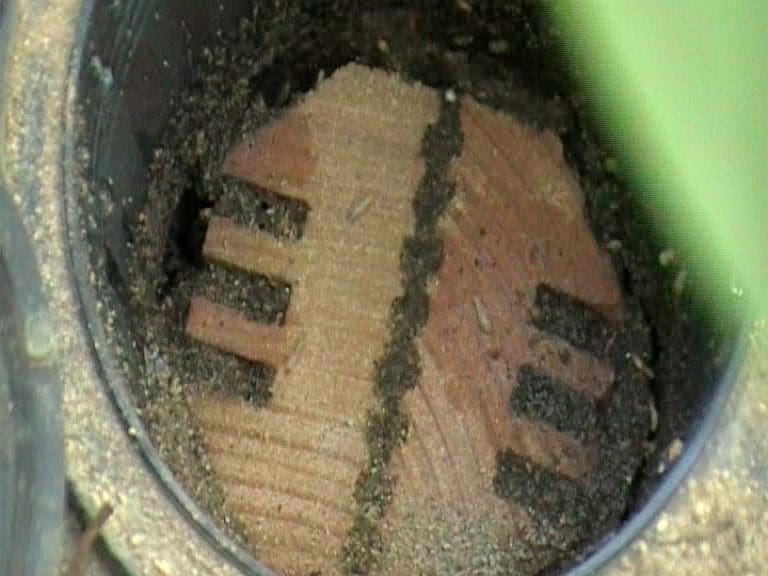
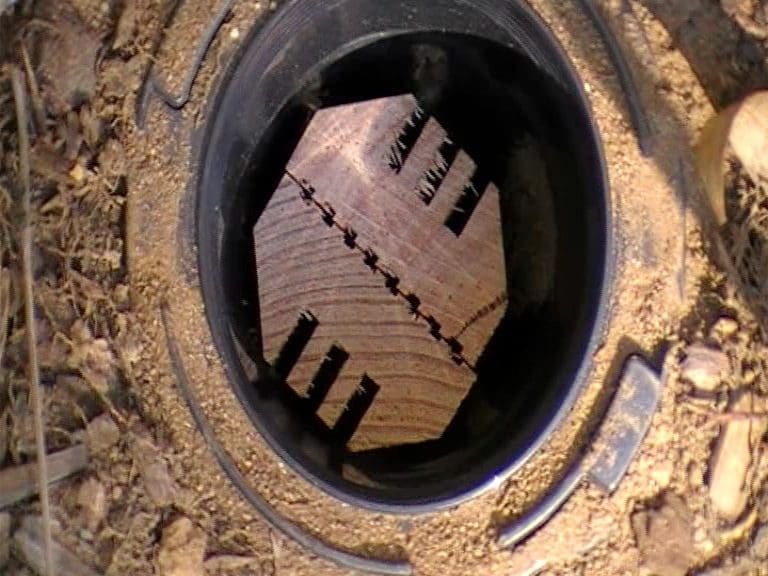
termite monitoring timbers in a station with termite mudding and some termites.
Termite monitoring timbers freshly placed in a termite monitoring station
Termite Inspection
A termite inspection is quite a specific service which AS 3660.2 sets out in its pages. The termite inspection is a different service to a Timber pest Inspection which is set out in AS 4349.3.
The basic difference is that a timber pest inspection carried out to AS 4349.3 is a prior to purchase inspection and it includes reporting on Fungal Decay and borers of seasoned timber. Generally it is a termite inspection that most pest control companies will carry out but the paperwork that they have left you should make it clear exactly what service they have carried out.
All areas of a property must be inspected to ensure that termites are not missed, after all we are looking for a moving insect the size of a grain of rice somewhere on your property! It is best that the inspector uses a process to guide him/her through the property and the process varies from company to company. Many companies basic process starts with areas of the property to inspect, with the yard or grounds, trees, stumps etc first, then the exterior, interior and finally the roof void.
What are we looking for when we carry out an inspection? Conducive conditions is one term often used and it means those conditions that that are enticing for or increase the likelihood of termites attacking. Like any other insect termites have basic needs and they are one tracked for those needs.
- Food, anything that is comprised of cellulose, so this can include waste timber, boxes, books, trees, tree stumps and any natural fibre.
- Water, they need a constant source of moisture so a dripping tap or leaking pipe is ideal.
- Shelter, this can take a few different forms dependent on the Species of termite but most often termites will nest within a tree or underground
Termite Food
It is often difficult for humans to understand just what it is that termites are after, as they tend to eat many and varied things. When we have a look at what the needs of a termite are in relation to food, it really does come down to natural fibres or almost any organic compound. Often when the termites consume these food sources they will have been processed or refined and turned into something completely different looking. One of the most common items that I find termites eating is books or magazines and sometimes newspapers all of these were of course derived from trees originally. I have seen termites eat silks, wool and other fibres, the heels out of ladies shoes (timber), the backing off carpet as well of course as any of the timbers used to construct or decorate our homes.
Water for Termites
Water is something that termites need in vast amounts. They require to live within a sealed system that has very high humidity and it takes a lot of moisture to keep it that way. The muddy deposits that termite shelter tubes and mudding is made of is actually termite faeces, soil and occasionally other substances mixed with water, this same type of “mud” is used in the nest to create the material within which they live. Reducing the amount of water available to termites is the aim. In their natural environment water is something that can be quite difficult to obtain and a permanent water source almost impossible, whereas around our homes there are often things like leaky taps, Hot water cylinder overflows that are dripping or leaky pipes, guttering or many other potential water sources.
Termite Shelter
Shelter for termites can take many forms but at its most basic it can be any area that can be excavated, to allow the building of the required structure, that enables all of the different functions inside a nest to be carried out.
Dependent upon species and availabilty of a place to nest, the chosen site may be underground, within a tree or stump, opportunistically they may take advantage of a void in or under one of our structures. From one species to the next their nesting habits vary and our search for the nest is often made easier once a positive identification has been made.
It is not necesary for treatment and in many cases in urban areas not possible to locate a nest. With the techniques and products available to us we are able to remotely kill all of the inhabitants of the nest with the demise of the Queen following soon after. Finding a nest and treating it can make termite control much quicker and easier.
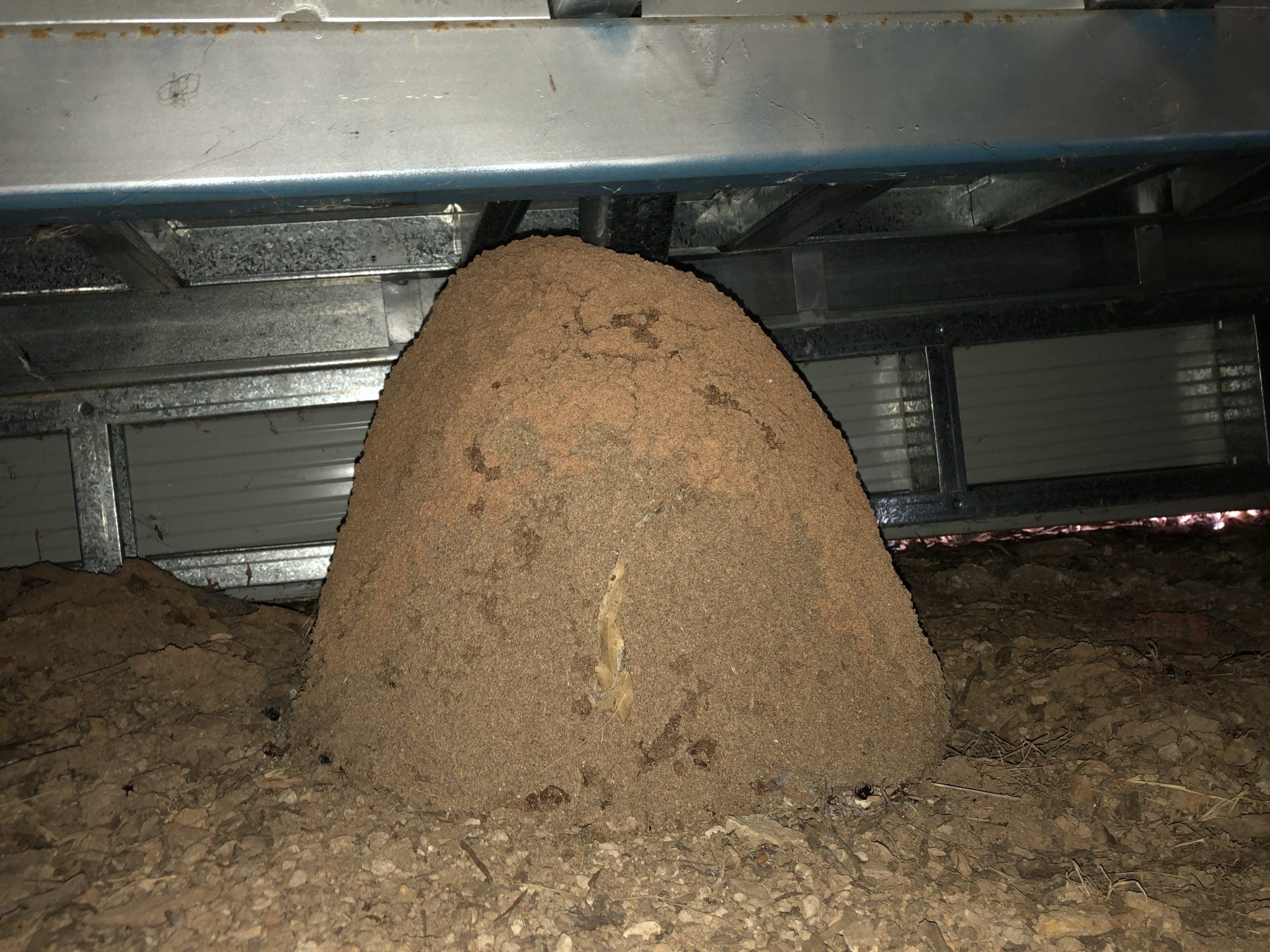
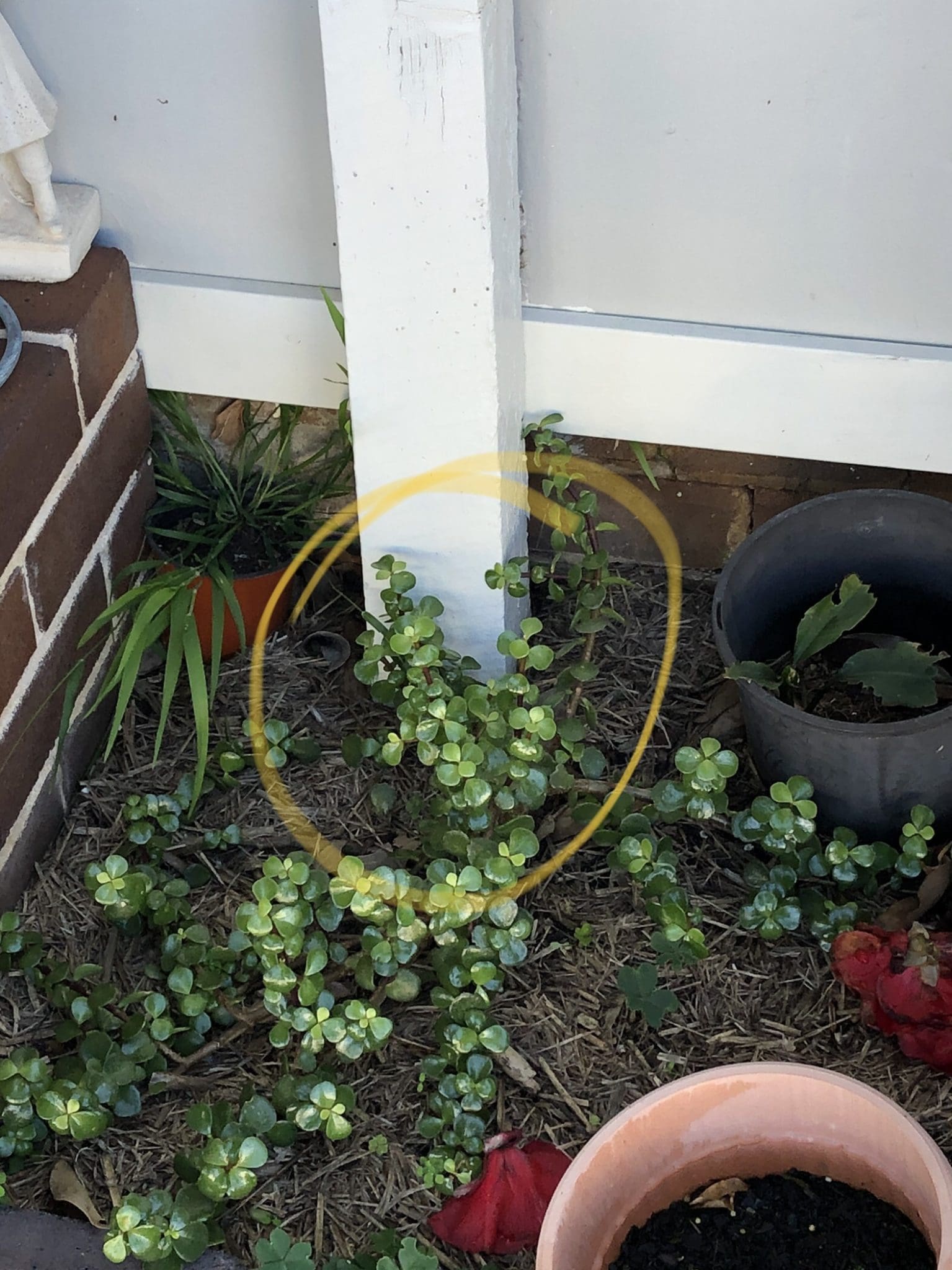
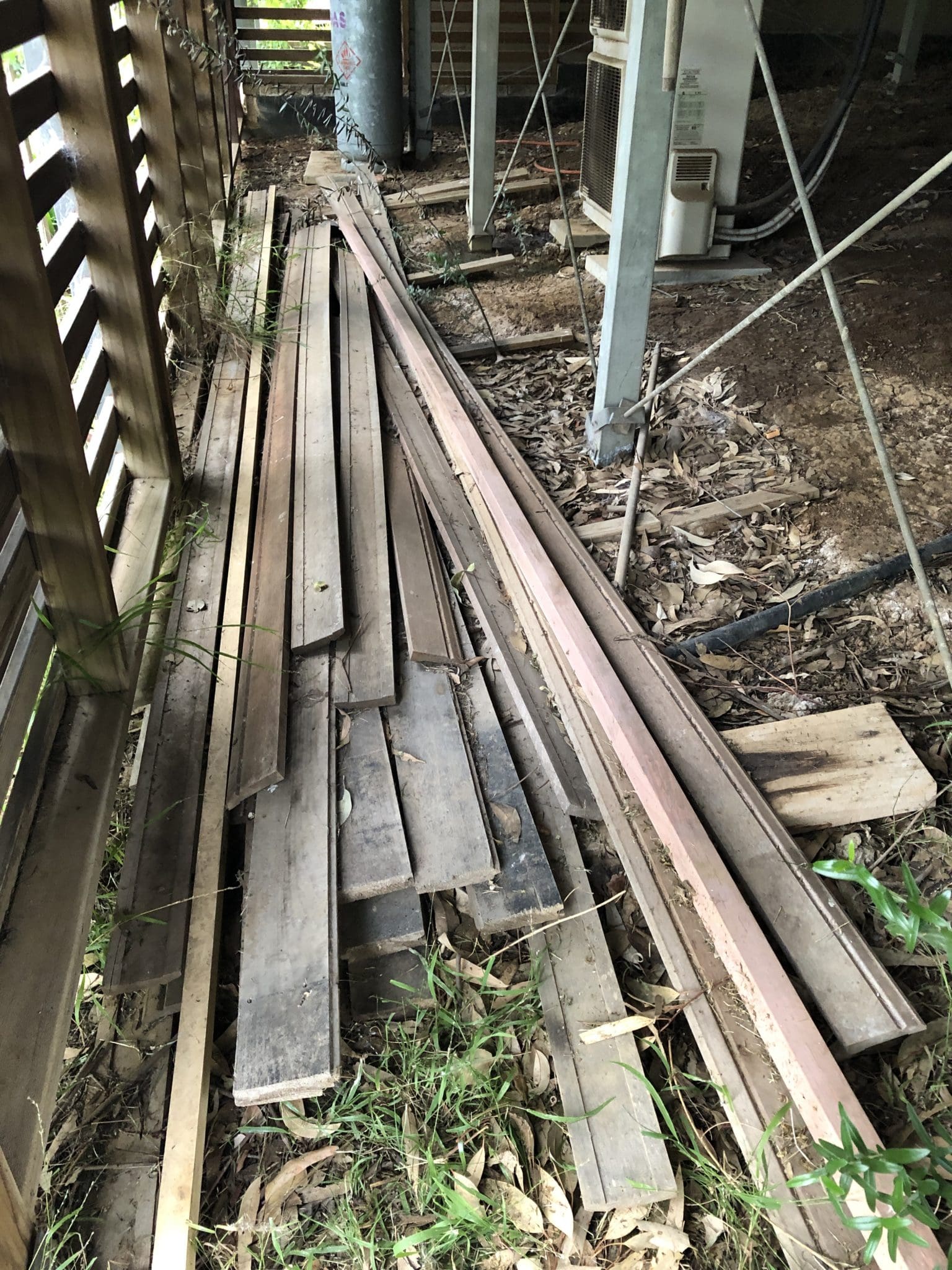
A termite mound nest under a school building in Picton
A downpipe on a house that has a leak allowing moisture to escape into the garden next to the house
Timber stored under a house in Camden. This is just termite food waiting for termites
What do we look at during a Termite Inspection
During a Termite Inspection the inspector will view all elements that are accessible on the property. This will take into account trees, stumps, waste and stored timber, landscape timbers and of course the structural elements of the house and any other accessible buildings on the property up to 50 metres from the house. There are often a great number of various items to take into account and many conducive conditions to consider as well. Once all areas and elements have been inspected the inspector will also take into account any extra information that may have been found from notices of previous termite treatment to verbal notes from the homeowner about the history of the building or property.
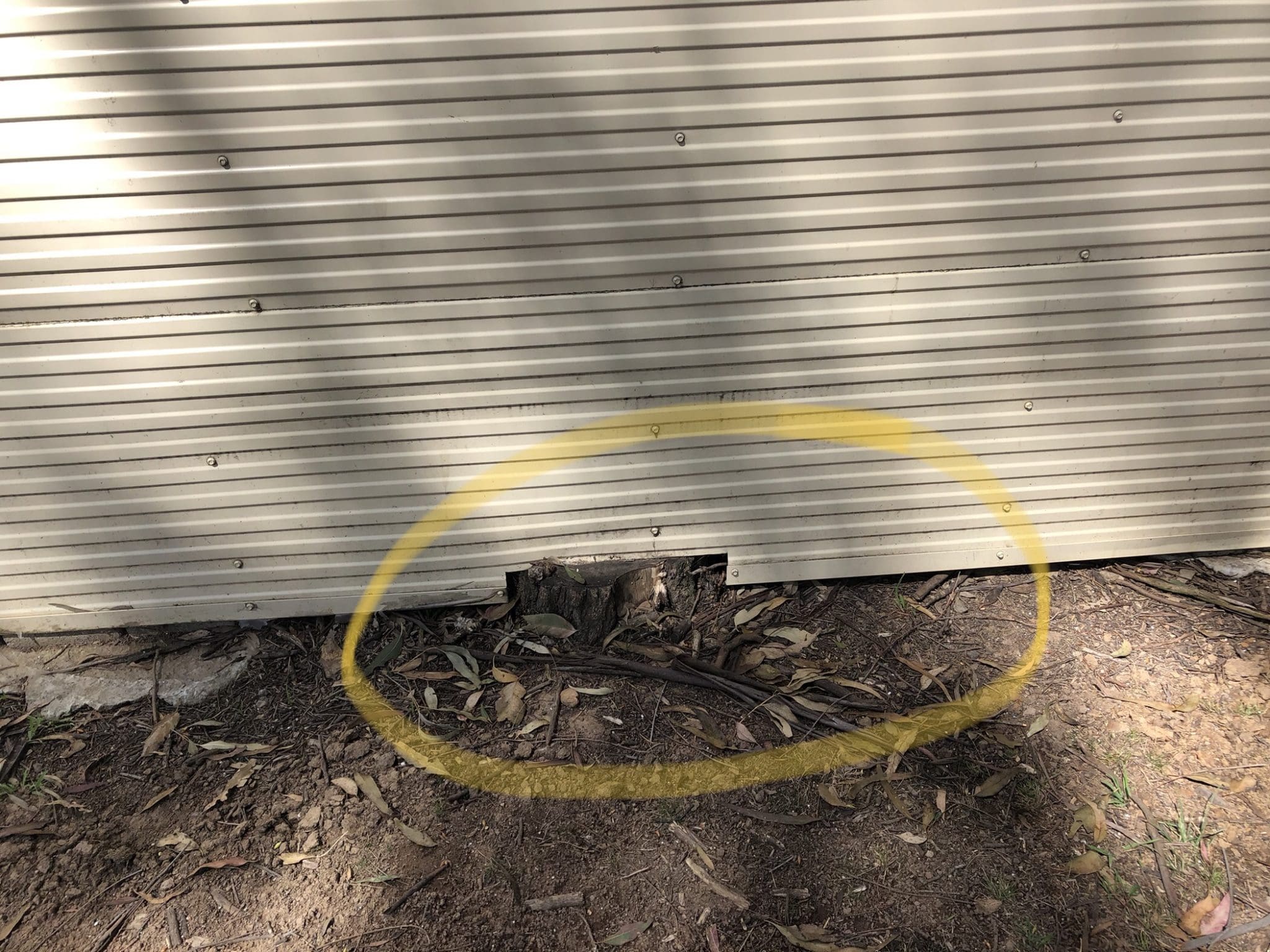
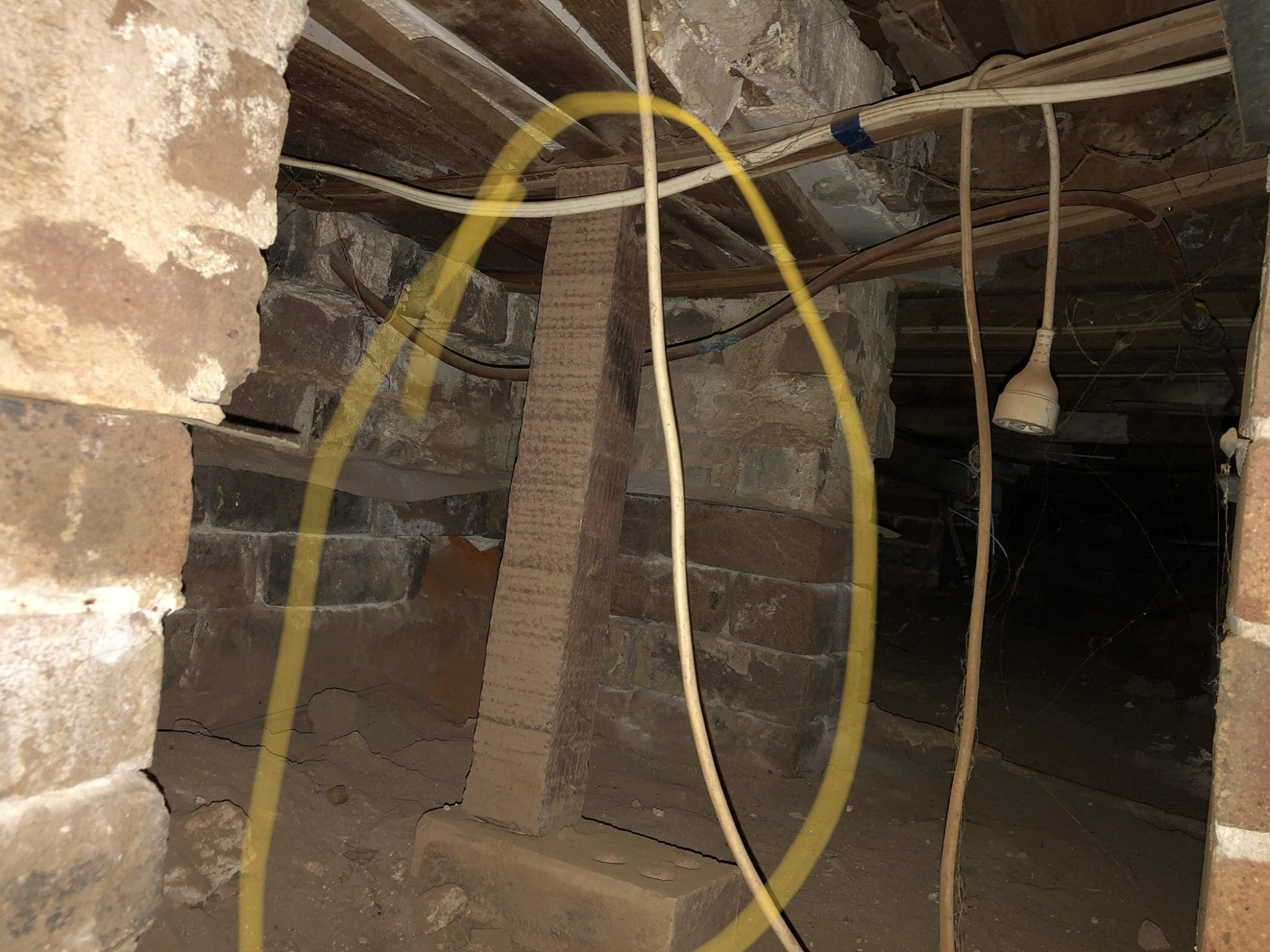
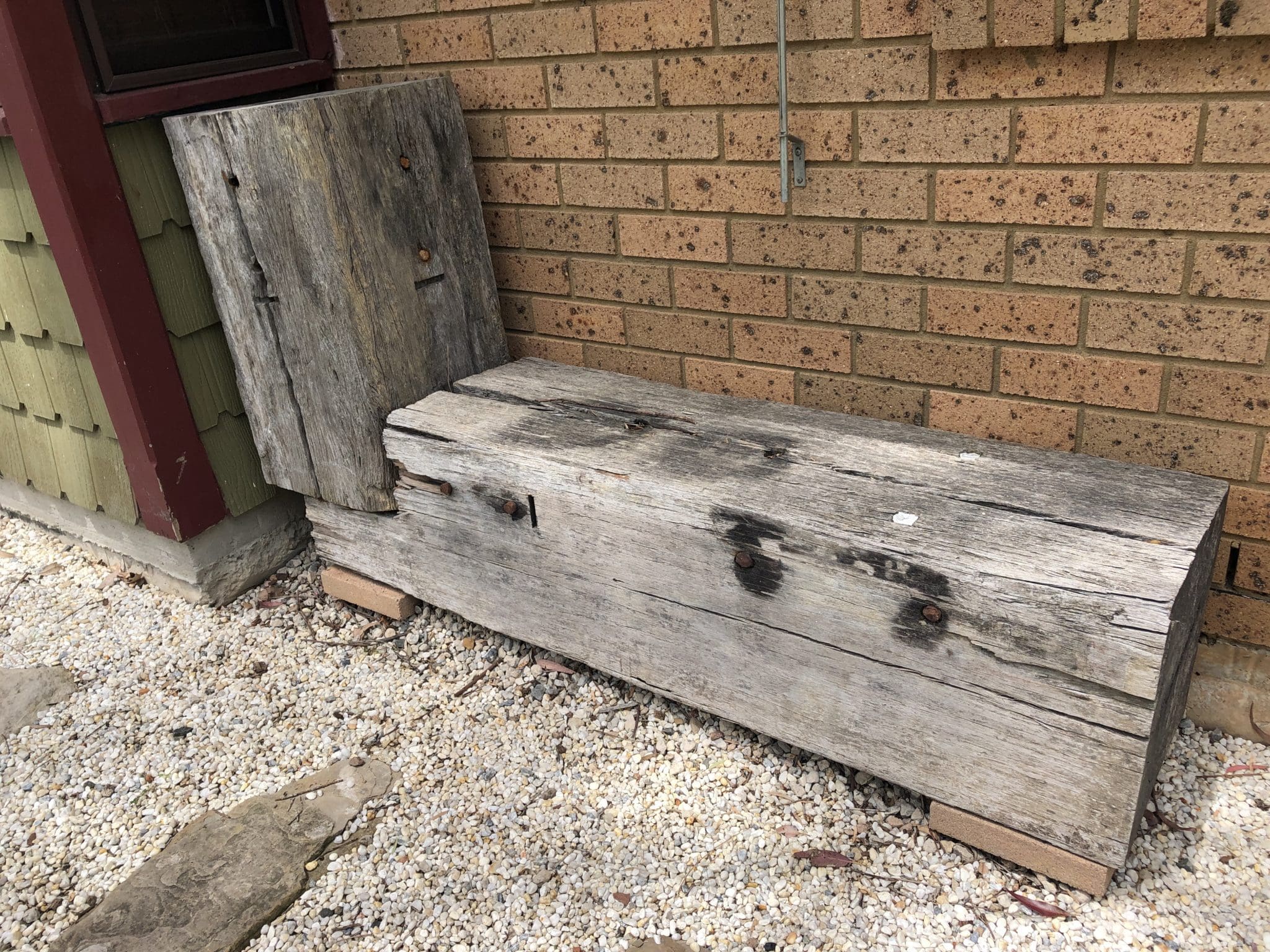
A stump that has had a shed built over it
A timber pier under a house
Decorative timbers next to a house
Timber Pest Inspection
A timber pest inspection in practice has very little difference to a Termite Inspection other than the fact that it also takes in the inspection of the property for borers of seasoned timber and fungal decay. Generally this type of inspection is carried out to AS 4349.3. A timber pest inspection is generally non invasive including such basic invasive activities as moving stored articles or insulation to enable a better view. So even if there is the potential to move items the inspector is not able to do so.
Mostly it is to for a prior to purchase pest inspection that this type of inspection is carried out. The standard is very specific in stating what should be inspected, how it is reported on and also that it makes appropriate recommendations.
Invasive Inspection
An invasive inspection for termites can be carried out whenever a standard inspection brings up questions that cannot be answered without delving deeper. Often there may be signs that termites exist within a building however either no definite proof or no way to be certain if there is damage caused by termites or how much damage there is.
There are methods that are non invasive that may be used before going to the extreme of an invasive inspection. These can include thermal imaging however there is no substitute for physically accessing areas to be certain of the damage level.
What exactly is an invasive termite inspection? The term is used to describe an inspection where it is necesary to remove wall or floor coverings and occasionally some other fixtures and fittings to enable an inspector to view timbers in inaccessible areas.
Often one of the first steps in an invasive inspection is to drill a series of holes in walls to enable a borescope to be inserted which can give the inspector a view of the inside of the walls. With a borescope we may be able to see the timbers within the wall but can not test to see if they are sound.
Occasionally there is a need to remove wall linings to ensure that the timbers behind are sound. This can be a time consuming and costly endeavour and is best avoided where possible.
Specific Device or Tools Inspection
There are basic tools for inspection which are specified in the relevant standards. On top of these basic tools are a range of tools including.
Termite detection dogs
Thermal imaging cameras
Carbon Dioxide detectors
Ultrasound devices
Radar detection devices
There are new tools and technologies becoming available continuously. many of these require that the technician has carried out training and can need constant upskilling. Always check that if you employ someone to use one of the above methods that they are suitably qualified and experienced. Nothing is a substitute for experience in dealing with termites at the coal face.
Termite Treatment
Termite treatments vary a lot depending on Termite species, construction type, soil type and even things like your landscaping and of course personal preference, maybe to a greener solution although many people just want to “NUKE” them.
A termite inspection needs to be carried out before a treatment EVRY TIME. It is during the inspection that a skilled technician will formulate the best methods for the premises and be able to give you a range of options. Many people protest that having an inspection carried out after they have found termites is a waste of money, however if an inspection is not carried out how do you know what species of termite you are dealing with, what the extent of the termite damage is, where any entry points are and of course is it only one species of termite?
Once you have gathered all of the information from the inspection your technician will be able to educate you on what solutions are available and which ones will suit your particular circumstance.
In General the steps are
- Inspection
- Colony Elimination
- Prevention
- Inspection on a regular basis
Colony Elimination
There are two general ways that colony elimination of termites is carried out, either when a colony has been located and we can directly treat it with a variety of products fit for the purpose or when we have not been able to locate the colony and we can employ a variety of methods to remotely kill the colony.
If at all possible it is ideal to find where the colony is as this tends be be a quicker and cheaper option for elimination. depending on species of termite the nesting habits vary and as such an experienced inspector is required to be able to locate the colony. It is not always possible to find the colony affecting a building, particularly in urban situations where the amount of land that the building sits on is often limited. In rural areas it is much more common to find the offending colony.
Direct treatment
When a colony has been located there are treatments available although there must be a positive identification of the termite species before the choice of treatment is made. If the colony has been found in a tree, stump or other cavity then we choose from a variety of synthetic pyrethroid dusts which are blown under pressure into the cavity ensuring fast death of the termites.
Remote treatment
If the colony can not be located then we have the option of either using a dust especially formulated to be carried back to the colony starting eventual destruction of the colony or a termite bait which is fed to the termites and carried back to the colony and shared with all of the members of the colony resulting in the eventual collapse of that colony.
There are a number of methods for remote treatment
Baiting, feeding the termites a generally celulose based food source laced with a toxicant that the termites take back to their nest and share with the other members of the colony. There are three main termite baiting systems available with some other small systems starting to be sold.
The Exterra termite baiting system is a good system that has at its heart a cellulose bait with a toxicant that can be applied to termite activity wherever it exists in a building or landscaping and monitoring stations to be placed in the ground at regular intervals around the perimeter of a building to protect it into the future.
Nemesis is a system that has a cellulose bait with a toxicant that like Exterra can be applied to termite activity wherever it exists in a building or landscaping and monitoring stations to be placed in the ground at regular intervals around the perimeter of a building to protect it into the future.
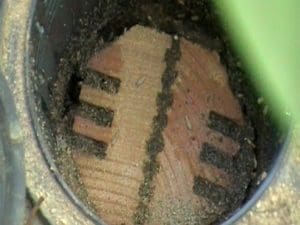
Termite Monitoring station in Picton with termite mudding and active termites
Sentricon has what it calls its “always active system” which can be applied to termite activity wherever it exists in a building or landscaping. Sentricon also has prebaited stations that are installed at regular intervals around the perimeter of buildings that we would like to protect.
All termite baiting systems must be monitored on a regular basis to detect activity and place or replace bait. Stations must be monitored as all of the systems rely upon regular inspection to work.
Trelona like Sentricon is a pre-baited system that already has a toxicant contained within the attractant parts of the station.
At Pestgo we have not yet had enough experience with this product to comment on its efficacy. It is currently being trialled and the results so far show similar results to other systems at a higher price. We will update this information when our trials are concluded.
Dusting, is where a very fine insecticidal dust is introduced to the termite workings so that the termites inadvertently carry the molecules of pesticide back to the nest ending in the ultimate destruction of the colony.
Dusting for termites is becoming a lost art. It has its place and can be particularly useful to treat termite colonies in trees or stumps and cavities. Before the advent of baiting systems, dusting was the only remote colony elimination method available to the pest control industry.
For a termite dusting treatment to be succesful it requires that an extremely detailed inspection is carried out prior to treatment. All areas of activity must be located before a dusting treatment is commenced as the treatment relies upon the dust coming into contact with as many termites as possible.
Traditional termite dusting treatments were carried out with Arsenic Trioxide dust which was very effective but deadly and had to be used with caution. In time a dust with the active Triflumuron came along with the benefit that it was much less toxic than Arsenic but it was very slow working. Currently the only termite dust on the market in Australia is a Fipronil which is quite effective when applied with skill.
The skill of termite dusting is fast disappearing in Australia with many new entrants to the industry unaware that it has ever even been an option. If you are looking at requesting having a termite dusting treatment carried out you would be well advised to enquire as to the experience and qualifications of the technician that will carry out the treatment.
Why would anyone choose to have a dusting treatment carried out for termites when there are other arguably better treatment types available?
- A quicker termite elimination can be achieved.
- Potentially less pesticide may enter the environment.
- Dusting could be cheaper than other types of treatment.
Foaming
There is a method of termite control available that uses various active ingredients suspended in a foaming agent. The foaming agent is pumped under pressure in to termite workings, cavities where termites are nesting or directly into termite nests.
Each individual product which is approved for foaming has exacting label conditions that must be adhered to by the technician. I believe that foams can be handy in situations where the object is to treat a known termite nest and can be injected thoroughly.
I have attended many job sites where rather inexperienced technicians have tried to treat large termite infestations with a foaming product only to fail.
The use of foams is quite limited, will generally have little to no residual effect and therefore are not useful in completing a termite elimination or prevention system around a home.
There may be limited use for foams where a chemical soil treated zone is being established, but there are known voids, eg under a patio or slab which is known to have a cavity. The foam can be used to attempt to create a coating of the active ingredient on all surfaces in these areas.
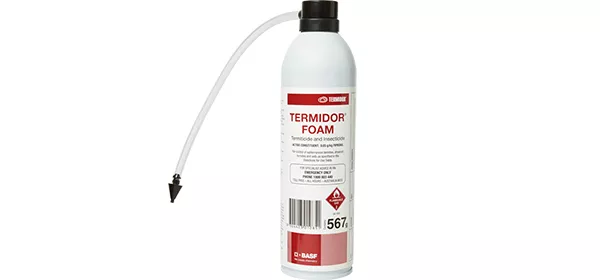
Not all Pest Controllers are Termite Controllers
All Licensed Pest Controllers must obtain certain qualifications to be able to charge for pest control services. As at writing this the NSW EPA are the responsible licensing body and you can search their database to ensure the person you are hiring is in fact licensed.
Search here to check if your pest controller is licensed.
If your pest controller is licensed then that is a good start the EPA website can not however tell you if person carrying out the work is trained or qualified in termite control. To carry out termite control a technician must carry out further training and gain experience in the field. It is generally recocnised that at least two years experience with termites in the field should be a minimum before a technician is competent to be treating or inspecting for termites by themselves.
A Termite Expert is what is called for really. When weighing up the risk involved to what is often most peoples biggest asset, why risk it to an under-qualified, under-experienced person. True Termite Experts can be difficult to find but worth the trouble (At Pestgo we have an in house Expert and access to a huge knowledge base if needed).
A good rule of thumb for working out whether your pest controller is qualified is to ask if they have gained the relevant units of competency pertaining to termite inspection and control being units 8 and 10 of the competency standards. As far as experience is concerned a minimum of 2 years experience in pest control but preferably 5 years experience in termite control with an experienced mentor.
Termite Prevention
Termite prevention is a many faceted part of termite control
New Building Protection
This is covered by the aforementioned Australian standard AS 3660.1 2017 Termite management Part 1: New building work
The standard sets out the minimum requirements that need to be put in place when constructing a building and in some circumstances when renovating or adding to an existing building. A working knowledge of this standard can be helpful when you are in the process of building a home.
One of the major points that needs to be understood about the work carried out that relates to this standard is that the goal of the standard is to ensure that termites cannot enter the building undetected. The aim of the work is not to keep termites out of the building.
Any type of system mentioned here will rely upon regular competent inspection to detect any termites that have managed to enter the building despite a system being implemented.
